Signs of the times
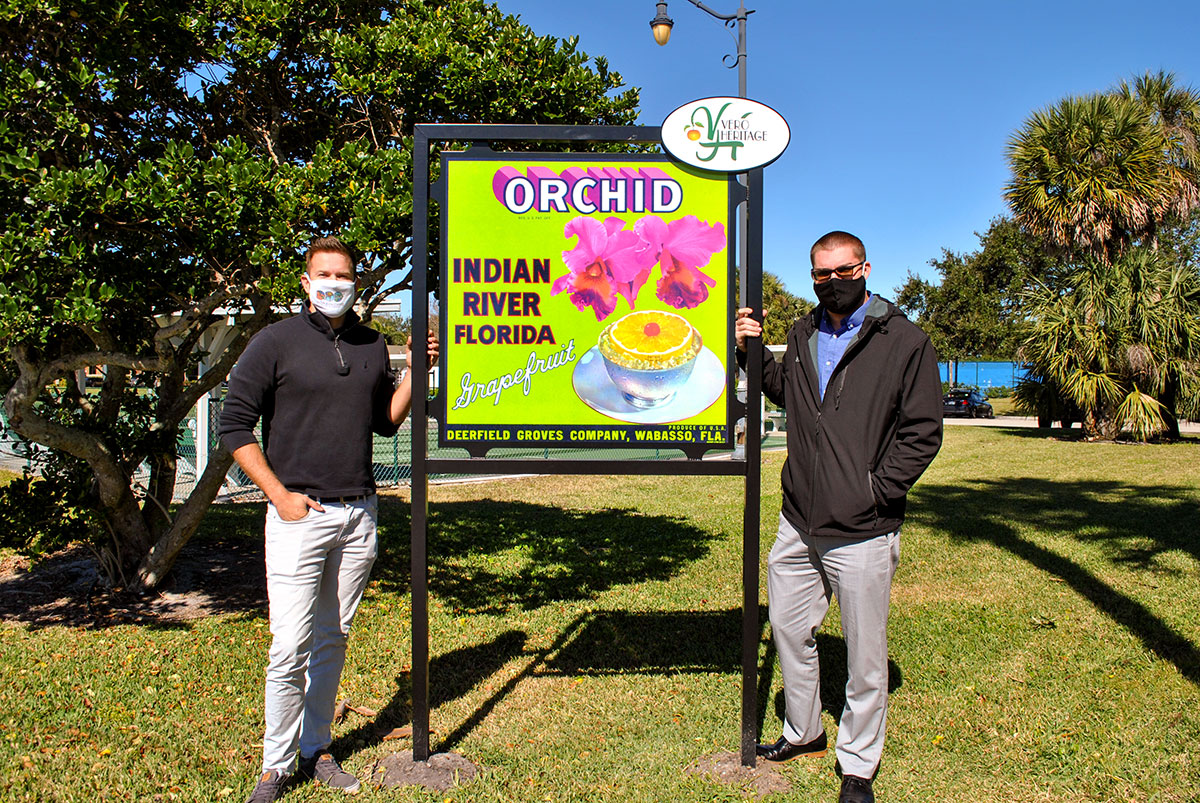
Innovative tour features advertising labels for Indian River citrus
BY KERRY FIRTH
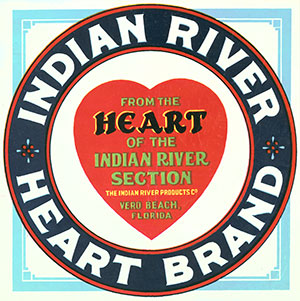
Just the name Indian River citrus brings back a flood of childhood memories for me. As a child growing up in South Florida and spending a lot of time at my grandmother’s house in Palm Beach, one of my fondest memories is piling the entire family into our old Ford station wagon and heading up the coast to Vero Beach where we would buy only the sweetest citrus for my grandmother to make her fabulous marmalades.
We’d stop at the citrus store and fill our bags with fresh grapefruit and oranges from the big bins of imperfect fruit because they were less expensive. They were far from imperfect however, because my siblings and I would end up peeling and eating an orange long before my parents finished gathering all the fruit to take to our friends back home.
Sure, anyone could buy citrus in a Palm Beach grocery store, but it just didn’t have the sweet taste of the fruit harvested in the Indian River Lagoon region.
Vero Beach’s love affair with Indian River citrus is rich in history. Early settlers in the late 1800s quickly discovered that the Indian River Lagoon on central Florida’s east coast proved to be the best location for growing citrus.
The combination of the area’s calciferous soil, temperate weather, humidity and high-water table created a higher brix ratio making the fruit sweeter than any other. Brix refers to the number of soluble solids in the fruit’s juice…the higher the brix, the sweeter the fruit. Testing by the U.S. Department of Agriculture has determined repeatedly that Indian River citrus has the highest brix levels in the world. It wasn’t long before the Indian River citrus label became one of the most envied in the country.
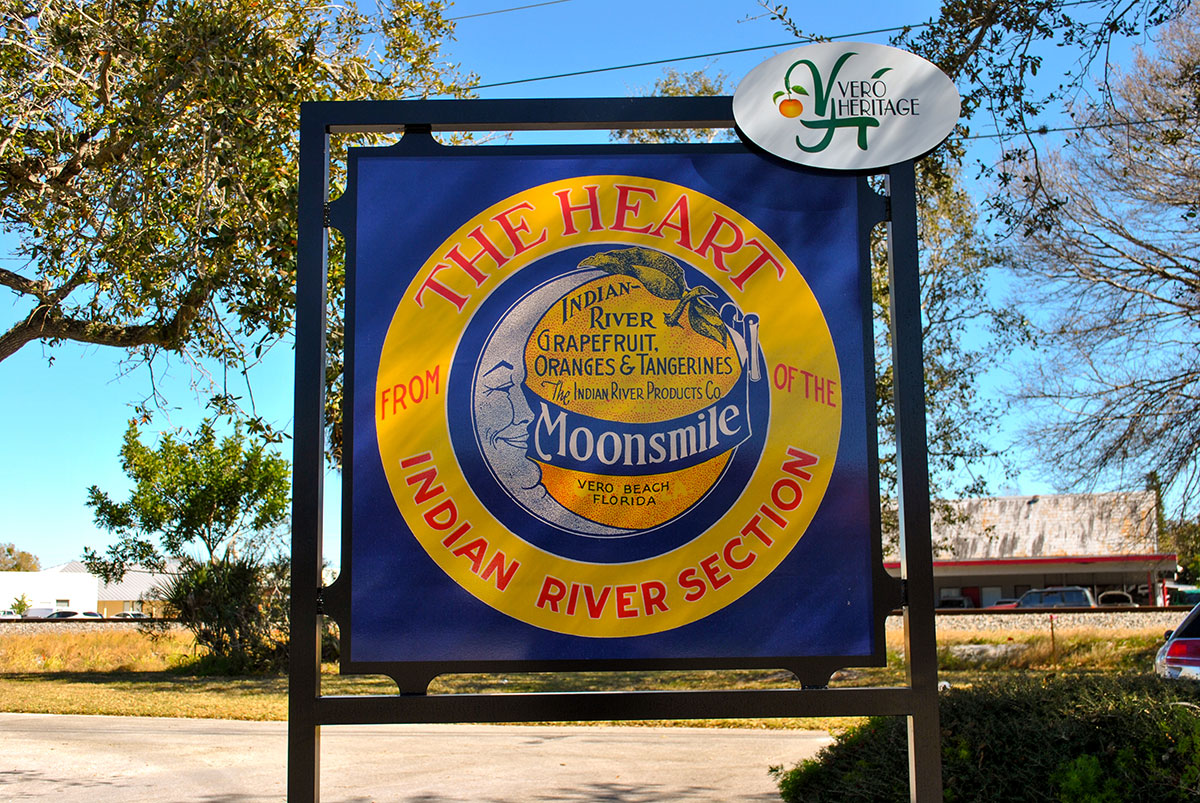
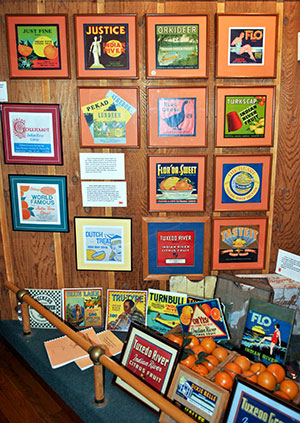
ADVERTISING LABELS
By the early 1920s, Indian River citrus was being packed and shipped in wooden crates to northern markets. In order to market the region’s citrus, artists created bright, colorful 10-by-10 labels that were glued to the end of the crate to attract buyers.
These whimsical labels depicted native heritage, local flora and fauna, sunny skies, sand beaches, palm trees and beautiful women. They changed with the times as reflected in their style, and trends. The label’s color denoted the grade of fruit and registration with the Florida Citrus Commission. They attracted so much attention that they doubled as mini billboards for the tourism industry and started reflecting local boating and fishing activities.
“The labels reflect a vibrant, nostalgic time in the history of Florida citrus,” said Heather Stapleton, executive director of Vero Heritage Inc., which operates the Indian River Citrus Museum. “We have a beautiful display of the original, authentic labels in the citrus museum along with reproductions available for sale. The labels even made it into a Broadway show.
“It was an early example of product placement when a local grower arranged to have a Bruce box adorned with a colorful Indian River Citrus label used as a prop on the production of ‘Lightnin.
“Now we’re very excited about our joint venture between private sponsors and the Tourism Development Council to develop a citrus label tour to pay homage to the first economic driver of this area,” she said.

ATTRACTIVE AND EDUCATIONAL
The tour is a way to expand the educational reach of the museum through a series of 15 signs erected throughout the county. Each 4-by-4 sign will showcase an original label on the front with an educational message about the label and the industry on the back. A QR code will direct the viewer to the Indian River Citrus Museum website where they can go to learn more about the history of the industry through videos of interviews with growers.
“We hope to get the signage placed in front of buildings with historical significance,” Stapleton explained. “Right now, we have three erected. One is in front of the Indian River Citrus Museum in the Vero Heritage Center, of course, because of the ties to the industry.
“We also have one in front of the Indian River Chamber of Commerce, depicting the role the labels played in promoting our area as a tourist destination. And the third is in front of the historic Vero Beach Railroad Station, because if it weren’t for the railroad, we never would have been able to get our product to the northern market.”
Stapleton hopes that the business community will sponsor the additional signs.
“It’s really not a fundraising campaign,” she explained. “We charge about $2,000 per sign, which covers the cost of design and construction. Each one comes with a 10-year warranty and should be easily touched up after that.
“It really is just an awareness campaign. Eventually we’ll have a driving map so tourists can drive from sign to sign and learn about the history. It will give visitors something different to do while they are in the area and hopefully bring more to the area,” Stapleton said.
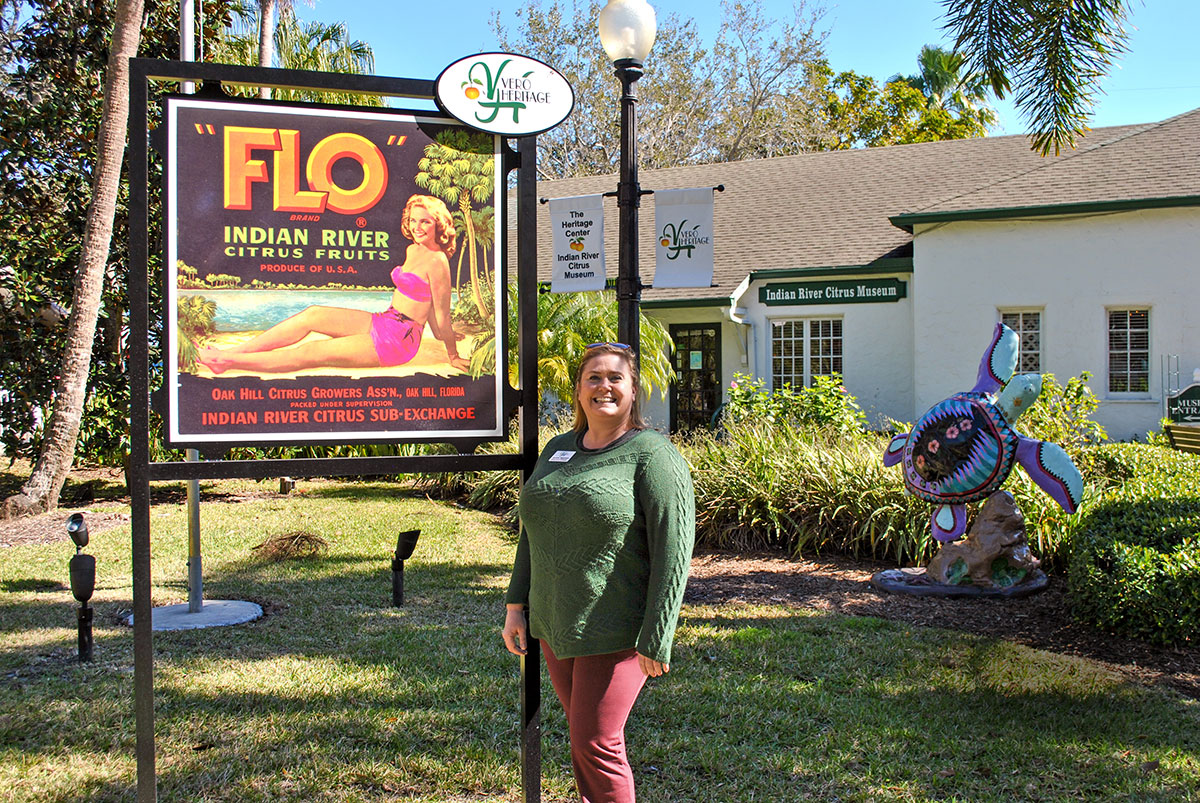
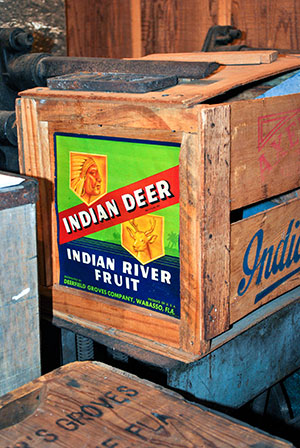
IMPORTANCE OF CITRUS
Stapleton brainstormed with George Hamner Jr., president of Indian River Exchange Packers Inc., during a promotional night at the museum where Hamner shared some of his vast collection of labels that his father had accumulated through the years.
They had heard about a similar label tour underway in Polk and Manatee counties in conjunction with the Florida Citrus Hall of Fame. The hall of fame eventually wants every county in Florida that grew citrus to have a label tour so they can create a state map of the tours and use it to promote tourism.
Funding for two of the signs came from Tourism Development Council with a grant to the Vero Heritage Center. Two additional signs were privately funded by Indian River Exchange Packers Inc.
“We’re all excited about this campaign because it depicts the historical significance of citrus in this area,” Hamner said. “It also helps promote small businesses along the way. The labels are part of a bygone era when we shipped everything in wooden crates. We stopped doing that in the late 1950s and we now ship in corrugated cardboard boxes stamped with our logos. I’m sure my fellow citrus farmers will sponsor additional signs moving forward.”
“You wouldn’t believe the interesting conversations I have with people who visit the museum,” said Stapleton. “Many have memories of growing up here when citrus was king. Others remember having citrus shipped to them up north. There seems to be a personal story with every citrus memory. I’m sure the labels replicated on signs around town will make them smile every time they see one.”
Businesses can contact Stapleton at the Vero Heritage/Indian River Citrus Museum at 770-2263 for more information on sponsoring a sign on the Citrus Label Tour.
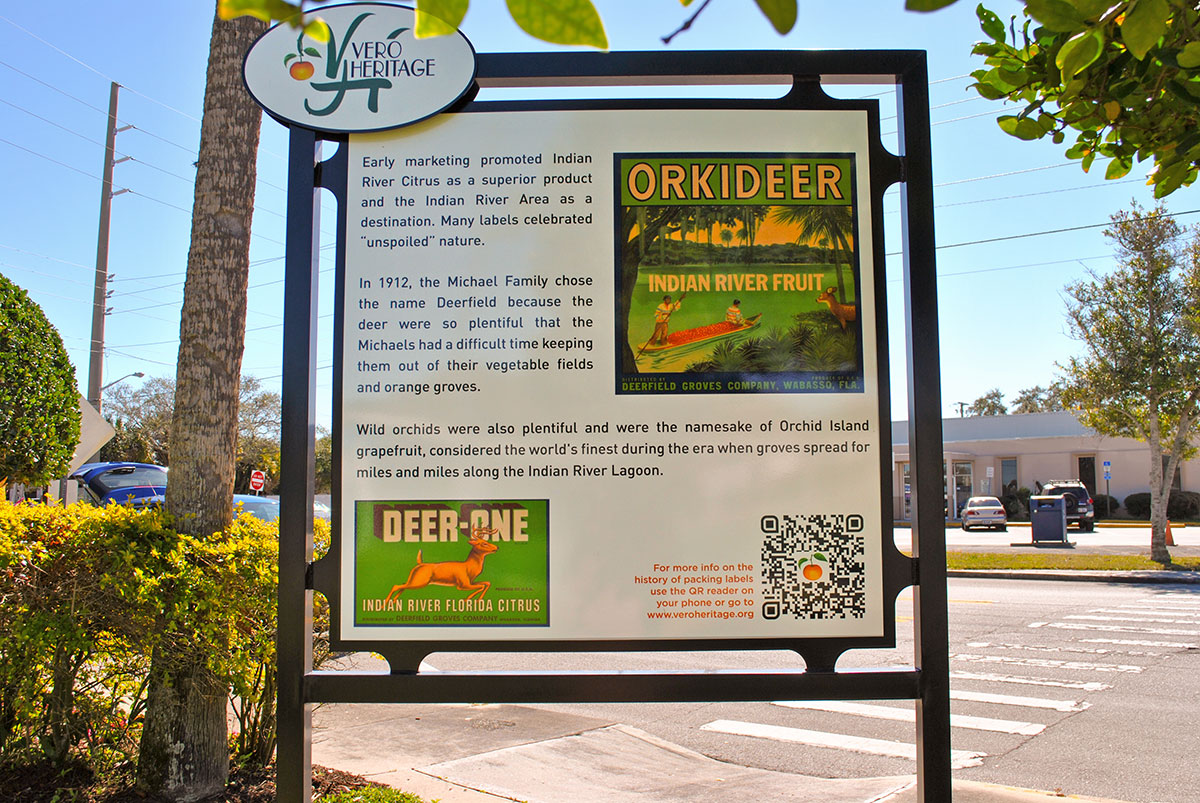
The back side of the each citrus label sign provides historical information. KERRY FIRTH
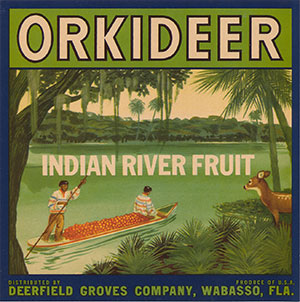
VERO HERITAGE INC.
